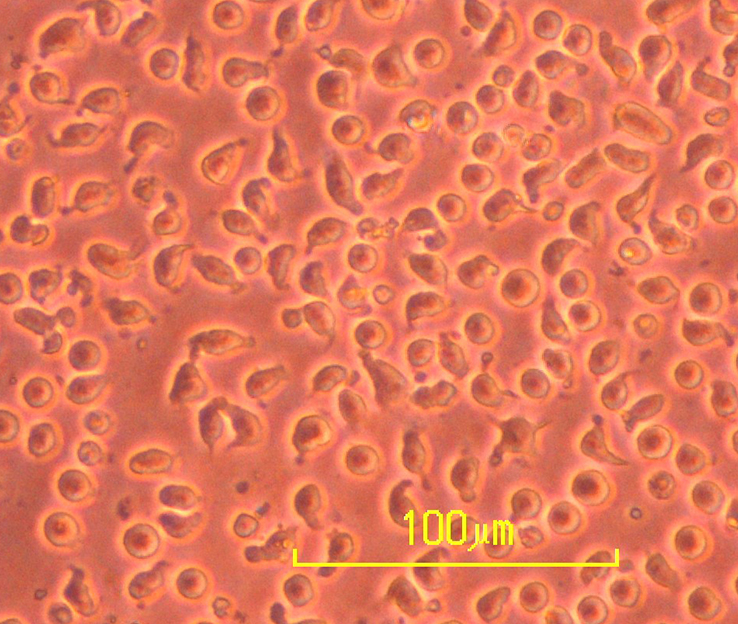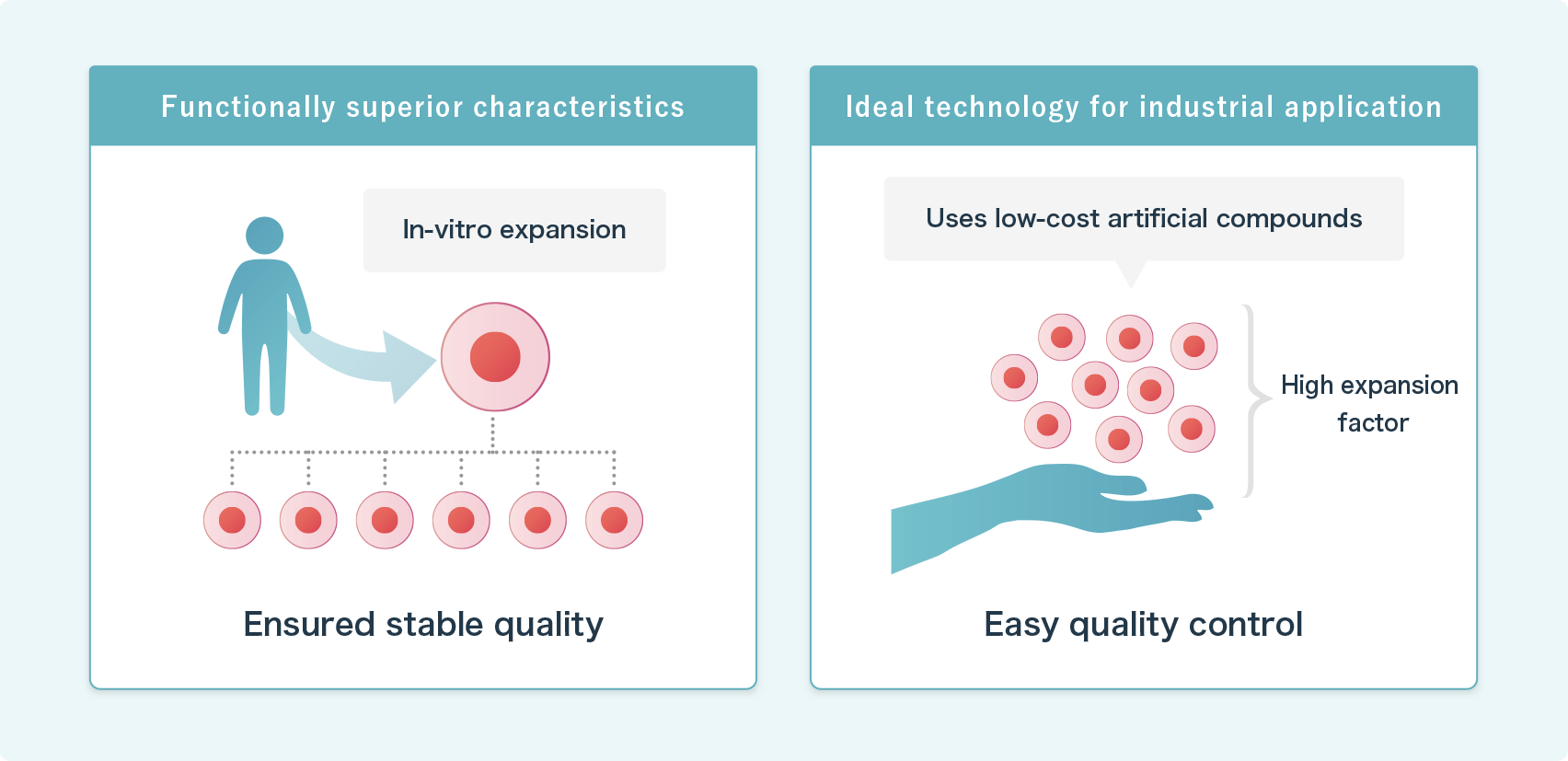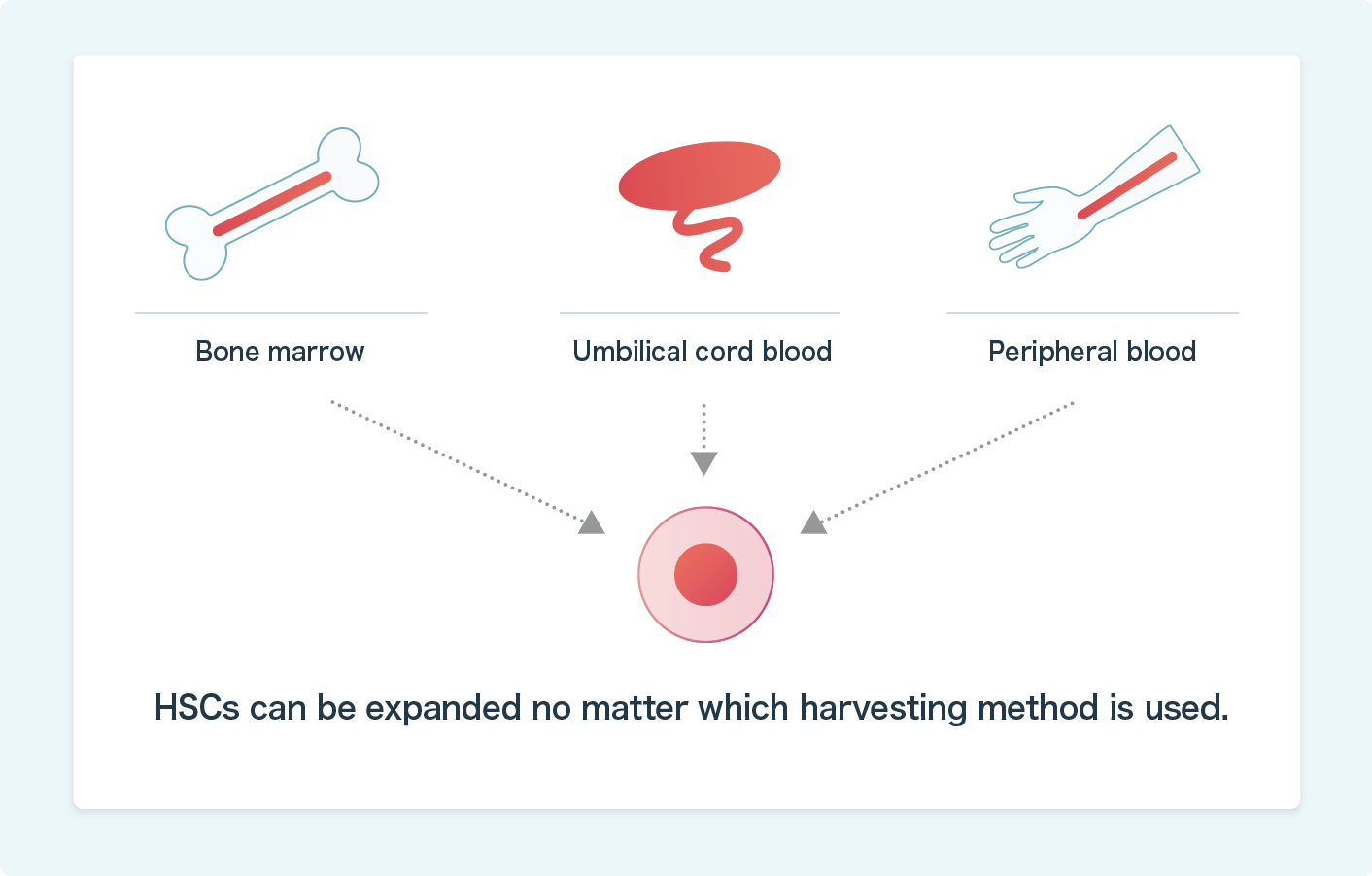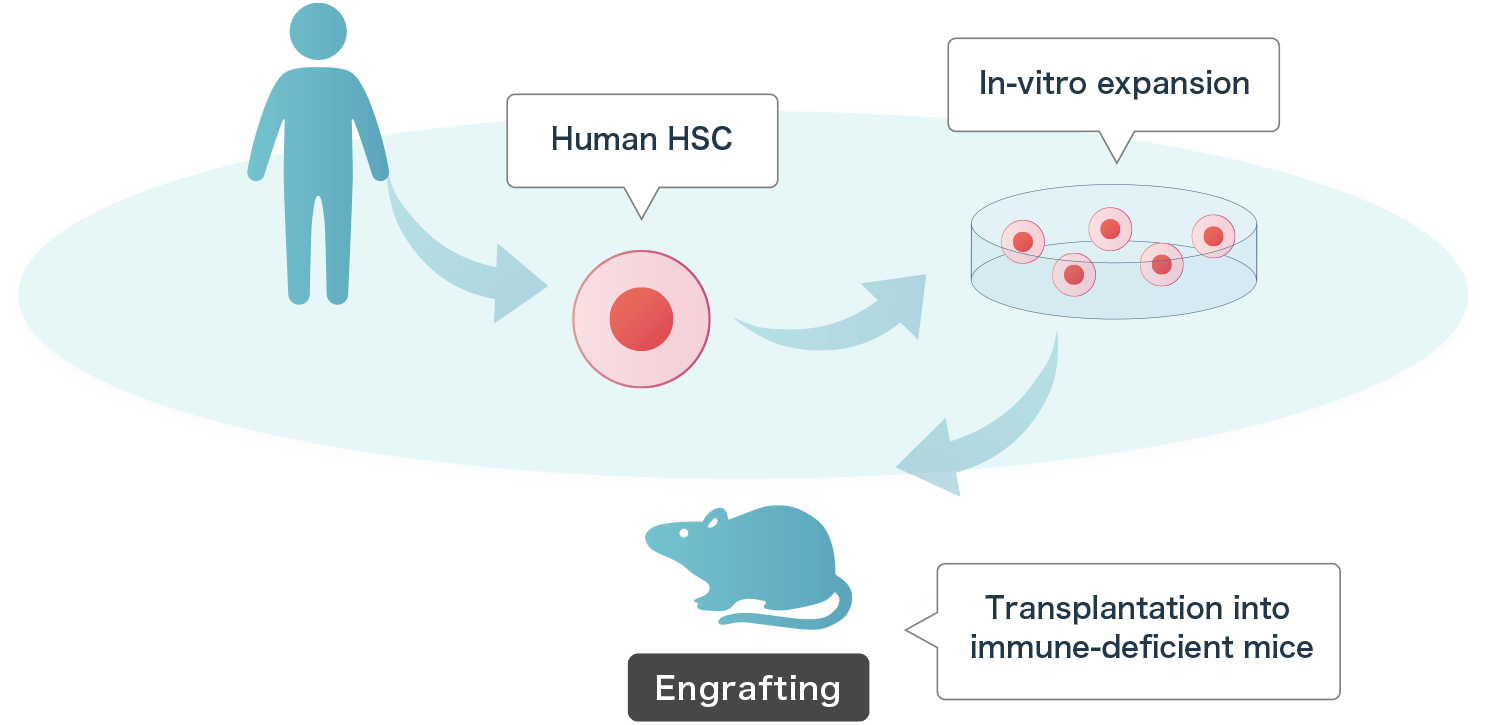Our technologies
Technology & InnovationIn-vitro expansion technology
In 2019, the team of specially appointed associate professor Satoshi Yamazaki (currently a professor at the University of Tsukuba) and specially appointed professor Hiromitsu Nakauchi (also a professor at Stanford University) at The Institute of Medical Science, The University of Tokyo, succeeded in developing in-vitro propagation technology for use with mouse HSCs*1.
In addition to being able to expand HSCs in large quantities in-vitro, they also discovered a growth medium that does not use biological substances, such as serum albumin or cytokines, which restricts variations in the media components to an absolute minimum, paving the way for the stable expansion of high-quality, large volume and inexpensive HSCs.
Subsequently, they further expanded their results and succeeded in developing a growth medium customized for human HSCs *2,3,4. As a result, they have reached the stage where these technologies can be put into practical use as products for regenerative medicine, etc., and Celaid Therapeutics has inherited these research results and is working towards concrete commercialization.
- *1 Adam et. al., Long -term ex vivo hematopoietic-stem-cell expansion allows nonconditioned transplantation. Nature. 2019 Jul.
- *2 Sakurai et. al., In vivo expansion of functional human hematopoietic stem progenitor cells by butyzamide. Int J Hematol. 2020 Mar.
- *3 WO 2021/049617
- *4 WO 2021/149799

Our areas of technological excellence
Among the outstanding advantages of our HSC expansion technology are, first, the technical aspects that it can be expanded in-vitro and that the quality of the expanded cells is stable. Secondly, quality control is easy because it is possible to increase a small number of HSCs with a high expansion factor by using low-cost artificial compounds instead of expensive biological substances, making it ideal for industrial use.

Further, HSCs can be expanded in-vitro, regardless of their origin, whether umbilical cord blood, bone marrow or peripheral blood.

In addition, when in-vitro expanded human HSCs were transplanted into mice with immune system deficiencies, it was confirmed that the human HSCs were able to be engrafted into the mice.

Based on these research results, we are pushing ahead with development towards clinical application in humans.